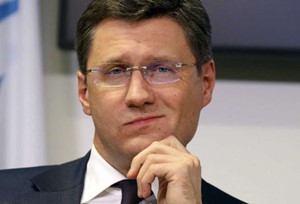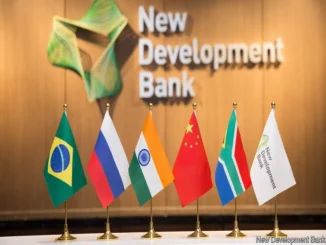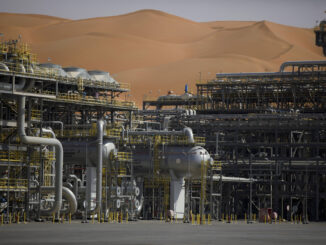
Saudi Arabia is dominating the market for new gas-fired power plants in the Middle East, with Mitsubishi Power providing the kingdom with advanced technology, according to Javier Cavada, president and CEO of Europe, the Middle East and Africa at Mitsubishi Power, a major power plant technology builder in the region.
Some of these new power plants will require hydrogen-readiness and include an option to add carbon capture technology, Cavada said in an interview with S&P Global Commodity Insights. Mitsubishi Power has fully tested and validated the hydrogen technology in-house in Japan before putting it to use commercially worldwide, including in the Middle East.
“I can tell you we have orders globally that are looking to move from gas to hydrogen, but the Middle East is at an advantage,” Cavada said. “Although the number of new power plants is smaller, they are larger in capacity. Definitely, the Gulf region has the largest ambition to fast track decarbonization; it is the powerhouse of the energy hub globally and now aims to become the clean energy global hub, with its move into renewables and low carbon power generation. Saudi Arabia and the UAE are the two places with the biggest ambitions.”
Conventional thermal fuels will make up 25% of global installed power capacity by 2050, even as renewables capture some 85% of all future power generation capacity additions globally, becoming the dominant source of power by 2050, according to latest forecasts by the Global Power and Renewables service and the Clean Energy Technology service, both part of S&P Global. Natural gas is increasingly seen as a flexible resource when solar or wind capacity is not available, they noted. Over 2023-2050, gas will add 29 GW/year of power capacity globally while solar photovoltaic will grow by 9 TW between now and 2050, or roughly 300 GW/year, they estimate.
Saudi Arabia, the world’s biggest oil exporter, is investing in building a low-carbon hydrogen and ammonia industry as the kingdom plans to reach net-zero emissions by 2060. At the same time, Saudi Aramco is developing a carbon capture hub in the Red Sea-facing industrial city of Jubail as part of its plans to reach net-zero by 2050. The Jubail plant is expected to have a capacity to capture 44 million mt/year of CO2 by 2035. The kingdom is planning to convert half of its power sector to gas and the other half to renewables.
New technology is needed to bring down hydrogen costs, Saudi Aramco CEO Amin Nasser said at the OPEC International Seminar in Vienna on July 5, adding that Saudi Aramco plans to produce 11 million mt/year of blue hydrogen.
“Hydrogen will undoubtedly have a role to play in the future, but not in the near future,” Nasser said. “Blue hydrogen costs $200-$250 per barrel oil equivalent. Green hydrogen costs $400 per barrel oil equivalent, which is a high cost. We need technology to lower production costs.”
Mitsubishi Power is working in Saudi Arabia with the ministry of energy, Saudi Aramco, the Saudi Electricity Co. and the Saline Water Conversion Corp., according to the company. Mitsubishi Power began operations in Saudi Arabia with its first supply of boilers to Aramco in Abqaiq in the 1960s.Mitsubishi Power’s projects in Saudi Arabia include the 2.650 GW Jeddah South thermal power plant.In 2023, Mitsubishi Power completed a local blade and vane service center for gas turbines at its Dammam facility. To date, a total of 11 Mitsubishi Power gas turbines of the M501F gas turbines have been delivered to Saudi Aramco, commencing with two units for the 151-MW Berri gas plant delivered beginning in 2004.
Some of Mitsubishi Power’s other projects in the Middle East include Aluminium Bahrain (Alba), where it is expanding electricity capacity at its power station 5 with 680.9 MW of hydrogen-ready gas turbines. The aluminum producer is also looking to add carbon capture technology. In the UAE, projects include the recent delivery of three advanced gas turbines ordered in 2020 to power a 2.4 GW gas-fired power plant in Fujairah, becoming the largest gas turbine combined cycle power plant in the UAE with completion expected in 2023, according to Mitsubishi Power.
More projects
Mitsubishi Power has also announced the simple cycle commercial operation of the 1,026.3 MW Al Layyah gas turbine power plant in the UAE, which is owned and operated by Sharjah Electricity, Water and Gas Authority. In Kuwait, the company has a long-term contract to upgrade the Sabiya power and water distillation station, the largest power and water provider in Kuwait.
In North Africa, the company has helped to develop the hydrogen-ready 450 MW Rades C combined cycle power plant in Tunisia designed to reduce C02 gases emitted. In Egypt, Mitsubishi Power is introducing hydrogen into the oil and gas sector and has signed a contract with Alexandria National Refining & Petrochemicals Co. to provide hydrogen fuel conversion technology for an existing 100 mt/hour boiler, enabling it to fire up to 100% hydrogen by the end of 2023. The hydrogen firing technology enables thermal power systems owners to decarbonize their existing plant for the day when hydrogen becomes available.
Gas-fired power plants can reduce emissions of a coal plant by 60% to 70%, Cavada said. “Gas is the cleanest fuel at scale that we have available today. Gas coupled with wind and solar is the perfect solution, add storage and then replace gas with hydrogen step by step, so the journey is clear. We see gas-fired power generation moving into hydrogen, but this is not going to happen in one or two years. It is going to be a long journey to have enough hydrogen produced.”
Mitsubishi Power is expecting the Middle East to follow the US lead in creating hydrogen hubs for development of hydrogen power. In response to the US allocation of up to $7 billion to fund six to 10 clean hydrogen hubs across the country, 22 projects have announced their applications, according to S&P Global research as of May 22. The winning bids are expected to be announced in late 2023.
Mitsubishi Power has been one to make an application to build hydrogen infrastructure in the US, Cavada said. “The US has been the showcase for us with supporting the Advanced Clean Energy Storage hub in Utah which is initially supporting the upgrade of the existing power plant to run on a blend of 30% hydrogen and increasingly expand to 100% green hydrogen,” he said. The hub will produce up to 100 mt/day of green hydrogen from renewable energy using electrolysis.
“The Middle East is the place where we expect the next hydrogen hub to happen and Saudi Arabia is all about scale so the projects could be very large,” Cavada said.



